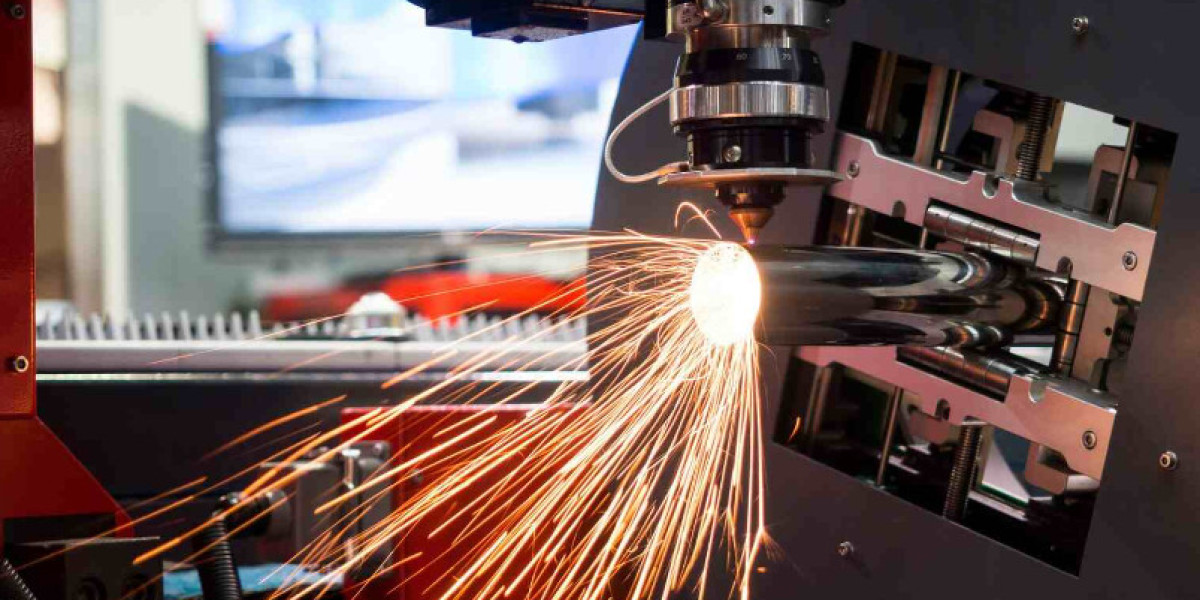Introduction
In modern manufacturing, CNC Routing has revolutionized the way materials are shaped, cut, and designed with precision. CNC (Computer Numerical Control) routing offers unparalleled accuracy, efficiency, and repeatability, making it an essential process in industries such as woodworking, metal fabrication, aerospace, signage, and custom prototyping.
This comprehensive guide will explore CNC routing, its benefits, applications, and best practices to help you understand why it is a vital tool in precision manufacturing.
What is CNC Routing?
CNC routing is a computer-controlled cutting process that uses a rotating cutting tool to remove material from a workpiece. Unlike manual cutting, CNC routers follow programmed instructions to produce consistent and precise cuts, curves, and engravings. This automation reduces human error and increases production efficiency.
CNC routers work on various materials, including wood, plastics, metals, composites, and foams, making them versatile for different industries.
Advantages of CNC Routing
1. High Precision and Accuracy
CNC routers can achieve tight tolerances and complex designs with minimal errors, ensuring uniformity across multiple parts.
2. Versatility Across Materials
Whether cutting wood, metal, or plastic, CNC routers offer flexibility and adaptability for different materials and projects.
3. Efficiency and Speed
Automation speeds up the manufacturing process, reducing production time and increasing throughput without compromising quality.
4. Cost-Effective Production
CNC routing minimizes material wastage and reduces labor costs by automating complex cutting processes.
5. Scalability for Prototyping and Mass Production
From single custom prototypes to large-scale production, CNC routing efficiently handles various manufacturing demands.
Key CNC Routing Processes
1. 2D and 3D Cutting
CNC routers cut flat sheets or carve three-dimensional designs, enabling a wide range of applications.
2. Engraving and Etching
CNC routing allows for intricate engraving on surfaces, commonly used in signage, branding, and decorative elements.
3. Pocketing and Carving
This process removes material within an enclosed area to create cavities, recesses, or detailed patterns.
4. Profiling and Contouring
CNC routing can shape materials into detailed contours and outlines, ensuring smooth edges and precise forms.
5. Drilling and Slotting
The router can drill precise holes and slots, ideal for joinery, cabinetry, and mechanical components.
Industries That Benefit from CNC Routing
1. Woodworking and Cabinetry
CNC routing is widely used in furniture making, cabinetry, and custom woodwork, offering precision cuts and intricate designs.
2. Aerospace Industry
Aircraft components, lightweight panels, and precision-cut parts benefit from CNC routing technology.
3. Signage and Advertising
CNC routing enables businesses to create custom signage, lettering, and branding materials with high accuracy.
4. Metal Fabrication
Precise metal parts and enclosures for machinery, electronics, and industrial applications are crafted using CNC routing.
5. Prototyping and Custom Manufacturing
CNC routing is an essential tool for prototyping unique designs and developing innovative products across various industries.
Choosing the Right CNC Routing Service Provider
1. Experience and Expertise
A skilled CNC routing provider ensures high-quality results with extensive industry knowledge and advanced technology.
2. Material and Machine Capabilities
Check if the provider offers a wide range of material options and uses modern CNC routers for versatile manufacturing.
3. Quality Control and Precision
Look for providers with stringent quality control measures and precision testing to ensure top-notch output.
4. Cost-Effectiveness and Lead Time
Evaluate the provider's pricing structure and turnaround time to balance cost and production efficiency.
5. Customization and Scalability
A good CNC routing service should offer custom solutions and scalability for different project sizes and requirements.
Best Practices for CNC Routing
1. Optimize Design for Manufacturability (DFM)
Simplify complex designs and ensure appropriate material selection for improved efficiency and cost-effectiveness.
2. Use the Right Cutting Tools
Selecting proper cutting tools based on material type enhances precision and extends tool life.
3. Implement Correct Speeds and Feeds
Using optimal cutting speeds and feed rates prevents tool wear, reduces material wastage, and improves accuracy.
4. Utilize Effective Clamping and Fixturing
Secure the workpiece properly to prevent vibrations and inaccuracies during the routing process.
5. Conduct Quality Inspections
Regular inspections and testing ensure that parts meet specifications and maintain consistent quality.
The Future of CNC Routing
As technology advances, CNC routing continues to evolve with AI-driven automation, IoT connectivity, and enhanced precision machining techniques. These innovations will further improve manufacturing efficiency, reduce material waste, and provide even greater customization capabilities for industries worldwide.
Conclusion
CNC Routing is a powerful tool in modern manufacturing, offering precision, efficiency, and versatility for a wide range of applications. Whether you're involved in woodworking, aerospace, metal fabrication, or signage, CNC routing ensures high-quality production with minimal waste and maximum accuracy.
By partnering with a reliable CNC routing service provider and following best machining practices, you can achieve superior results and optimize your manufacturing process.
Explore the benefits of CNC routing today and take your precision manufacturing capabilities to the next level!







